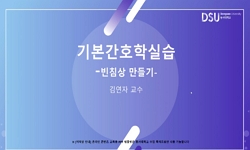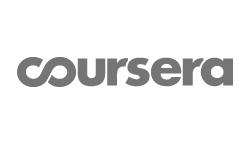Background: Hand hygiene is considered the simplest and most cost-effective method of infection prevention. Regular observation and feedback on hand hygiene compliance are key strategies for its enhancement. This study evaluated the effectiveness of h...
http://chineseinput.net/에서 pinyin(병음)방식으로 중국어를 변환할 수 있습니다.
변환된 중국어를 복사하여 사용하시면 됩니다.
- 中文 을 입력하시려면 zhongwen을 입력하시고 space를누르시면됩니다.
- 北京 을 입력하시려면 beijing을 입력하시고 space를 누르시면 됩니다.

전국의료관련감염감시체계 손위생 부분 결과보고: 2019년 7월부터 2022년 12월 = Korean National Healthcare-associated Infections Surveillance System for Hand Hygiene Report: Data Summary from July 2019 to December 2022
한글로보기https://www.riss.kr/link?id=A109112560
-
저자
김성란 (고려대학교 구로병원 감염관리실) ; 차경숙 (선문대학교 간호학과) ; 권오미 (세브란스병원 감염관리실) ; 김미나 (강남세브란스병원 감염관리실) ; 김옥선 (강서대학교 간호학과) ; 김지희 (이화여자대학교 의과대학 부속 서울병원 감염관리실) ; 박소연 (서울아산병원 감염관리실) ; 신명진 (분당서울대학교병원 감염관리팀) ; 유은성 (원광대학교병원 감염관리실) ; 이승은 (고려대학교 안암병원 감염관리실) ; 정선주 (한양대학교병원 감염관리팀) ; 정종숙 (삼성서울병원 감염관리실) ; 최인순 (중앙대학교 광명병원 감염관리팀) ; 최종림 (계명대학교 간호대학) ; 최지연 (중앙대학교병원 감염관리팀) ; 한시현 (단국대학교병원 감염관리팀) ; 홍혜경 (순천향대학교 부속 부천병원 감염관리팀)
- 발행기관
- 학술지명
- 권호사항
-
발행연도
2024
-
작성언어
Korean
- 주제어
-
등재정보
KCI등재
-
자료형태
학술저널
-
수록면
40-47(8쪽)
- DOI식별코드
- 제공처
- 소장기관
-
0
상세조회 -
0
다운로드
부가정보
다국어 초록 (Multilingual Abstract)
Background: Hand hygiene is considered the simplest and most cost-effective method of infection prevention. Regular observation and feedback on hand hygiene compliance are key strategies for its enhancement. This study evaluated the effectiveness of hand hygiene surveillance, including direct observation and feedback, by comprehensively analyzing the reported hand hygiene compliance within the Korean National Healthcare-Associated Infections Surveillance System from 2019 to 2022.
Methods: Participating medical institutions included general hospitals and hospitals with infection control departments that consented to participate. Hand hygiene surveillance was conducted using direct observation. Collected data, including healthcare workers, clinical areas, hand hygiene moments, and hand hygiene compliance, were recorded to calculate hand hygiene compliance rates. Additionally, the volume of alcohol-based hand sanitizers used per patient per day was investigated as an indirect indicator of hand hygiene compliance. The study was conducted from July 2019 to December 2022.
Results: Hand hygiene compliance increased from 87.2% in Q3 2019 to 89.9% in 2022. Nurses and medical technologists showed the highest compliance rates, whereas doctors showed the lowest compliance rates. Intensive care units excelled in compliance, whereas emergency departments lagged. Compliance was highest after patient contact and lowest when the patient’s surroundings were touched. Larger hospitals consumed more alcohol-based hand sanitizers than smaller hospitals did.
Conclusion: This study confirmed an improvement in hand hygiene compliance through sustained surveillance, indicating its contribution not only to preventing infection transfer within healthcare facilities but also to fostering a culture of hand hygiene in the country.
동일학술지(권/호) 다른 논문
-
- 대한의료관련감염관리학회
- 김영진
- 2024
- KCI등재
-
- 대한의료관련감염관리학회
- 이혁민
- 2024
- KCI등재
-
전국수술부위감염감시체계 결과 보고: 2021년 7월부터 2022년 6월까지
- 대한의료관련감염관리학회
- 박정완
- 2024
- KCI등재
-
- 대한의료관련감염관리학회
- 김영롱
- 2024
- KCI등재




 KCI
KCI







